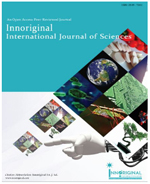PHARMACOGNOSTICAL AND PHYTOCHEMICAL STUDY OF ACACIA CATECHU (LINN. F.) WILLD. & AZADIRACHTA INDICA (A. JUSS.)
Abstract
Abstract:In Ayurveda the description regarding the plants is available in the Nighantus, where in various synonyms are given to each plant while describing it. In this pattern many drugs are available with one and the same name. So while going through the Ayurvedic texts no one properly understood as to which exact drug should be taken. While Marketing Ayurvedic drugs, the business minded peoples mix spurious and adulterant drugs in the original drug which make it difficult to identify the original drug. Apart from that, by the help of pharmacognostical study we can suggest substitutes to some rare species and save them from extinction.The word analysis means the detailed examination which reveals the minor but most important aspects regarding the drug. So without analytical study, the drug study is incomplete. Analytical study of a product provides some standards and new facts to judge its quality. It is useful to decide the future work plan and objective parameters to know the exact status of drug by conducting the comparative study of various samples during drug preparation. The Phytochemical and Analytical research in fact, can play a very crucial role in such research works. With the help of these studies, it is possible to standardize the plant and differentiate the adulterants, which is the need of hour. The therapeutic efficacies of medicinal plants depend upon its quality and percentage of active principles in it. In the present study the bark of Acacia catechu (Linn.f.) Willd. and Azadirachta indica (A. Juss.) were chosen for Pharmacognostical study and bark powder were also evaluated chemically.References
References:
• Prof. K.C. Chunekar (2010) Bhavaprakasha Nighantu edited by G.S. Pandey; Chaukhambha Bharati Academy, Varanasi: Pg. 314-317, 513-515.
• Prof. P.V. Sharma (2006) Kaideva Nighantu, Pathyapathya - Vibodhak; Chaukhambha Orientalia, Varanasi: Pg. 153-154, 163-164.
• Acharya Priyavrat Sharma (1999) Dravyaguna Vigyan, Vol. II, Chaukhambha Bharti Academy, Varanasi: Pg. 149-152, 159- 162.
• A C Dutta , Botany for degree students, Oxford university press, 6th edition. Pg. no. 556, 563-568.
• C K Kokate, A P Purohit, S B Gokhale, Pharmacognosy, Nirali Publication, 35th edition. Pg. no. 265, 295.
• The Ayurvedic Pharmacopoeia of India, Part I, Volume I, Govt. of India, Ministry of Health and Family Welfare, Dept. of Indian System of Medicine & Homoeopathy, New Delhi. Pg. no.96-97,142-143,156.
• The Ayurvedic Pharmacopoeia of India (1999), Part I, Volume II, First Edition, Govt. of India, Ministry of Health and Family Welfare, Dept. of Indian System of Medicine & Homoeopathy, New Delhi. Pg. no. 126-127, 190,191, 195-196.


